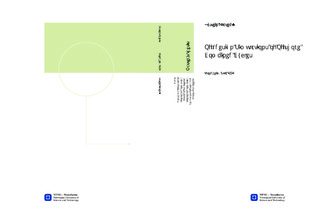| dc.description.abstract | This thesis presents an off-design simulation of offshore combined cycles. Offshore installations have a substantial power demand to facilitate the oil and gas production. To cover this need of power almost all the platforms use one or several gas turbines, often described as a simple cycle. However, because of high taxes on emissions, and increasing gas prices, more efficient technologies have been reviewed. One solution has been installing combined cycles (CC) offshore. Between 1999 and 2000 three combined cycles were installed on the Norwegian continental shelf and are still in operation. A combined plant may operate for prolonged time at off-design conditions, depending on power demand, ambient condition offshore. First, this thesis gives a description of combined cycles from a thermodynamic and technical point of view. A study of existing offshore combined cycles is performed, and some of the implications of using combined cycles offshore are discussed. In the study, also off-design performance regarding the gas turbine and steam cycle is presented. Further, the simulation tool GTPRO is used to model two CC plants, one designed for offshore installations, and one designed to achieve high efficiency. As part of the design process a sensitivity analysis is performed to find a good trade-off between efficiency and weight for the offshore plant. The model showed good agreements compared with the existing offshore plants, with a power output of 50.3MW, plant efficiency of 50.3%, and similar weight of the skids. The high efficient plant, based on the same gas turbine, and the same assumptions produced 53.1MW. This model gained 2.4MW more in power output, however with a penalty of 209 ton in extra weight.To review the plants performance and operability, off-design simulations were performed in GTMASTER. Both part load and changing ambient temperature were investigated. The results showed that both plants had similar behavior in performance at off-design, and that the GT strongly dictates the behavior of the steam cycle. At part load the relative SC efficiency increases, resulting in general high plant efficiency. At 60% GT load, the relative gas turbine efficiency is 81% compared to the relative plant efficiencies of about 90%. The difference in efficiency between the high efficient plant and the offshore plant remains constant at part load. The result from the simulations of ambient temperature is that none of plants will achieve higher plant gross efficiency at changing ambient temperature. The best plant efficiency occurs at design point. However, both plants have a long interval with approximately 100 % plant efficiency. From 15 to 0°C, the relative SC gross efficiency drops with 5 %, and the relative GT efficiency increase with 2%. However, the power output changes for both the GT and ST. From 28°C to about 0°C the power output increase almost linearly for the SC and GT. | nb_NO |

